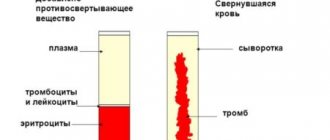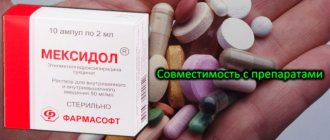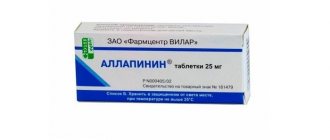Amlodipine Teva is a drug that has the property of dilating blood vessels and accordingly lowering blood pressure. Also, this drug is a blocking factor for slow calcium channels (calcium antagonist).
Calcium ions play an important role in cell metabolism. However, in case of any functional failures, with excessive intake of calcium into the myocardial cells, the need of this tissue for oxygen increases and metabolism is disrupted, which can lead to ischemia. This medication prevents the passage of calcium into the muscle tissue of the vessel, blocking slow channels.
How is Amlodipine Teva different from Amlodipine?
Amlodipine and Amlodipine Teva contain the same active element in equal doses, but they have significant differences. So, how is Amlodipine Teva different from Amlodipine?
First of all, it should be noted that these medications are produced in different countries and using different technologies: Amlodipine Teva is manufactured in pharmaceutical factories in Hungary, where they use the methods of the Israeli corporation. Amlodipine is produced in factories in Russia. Different manufacturing technologies for these medications determine the differences between them.
Amlodipine Teva is lactose-free and can be taken by people intolerant to milk protein.
Composition and properties
The drug is sold in the form of tablets, round in shape and white in color, containing 5 or 10 mg of the active ingredient - amlodipine besylate. Includes medicine and other substances, including:
- MCC;
- food emulsifier E572;
- acid salt of an alkali metal.
"Amlodipine" has a pronounced antihypertensive effect, which is achieved due to the ability of the main substance to relax the smooth muscles of blood vessels.
The pharmaceutical drug in question is a second-generation calcium antagonist, which, in addition to its hypotensive properties, exhibits an antianginal effect due to the dilation of arteries and arterioles, a decrease in peripheral vascular resistance and a decrease in afterload on the myocardium. Plus, Amlodipine-Teva prevents spasm of the coronary arteries, effectively reduces the myocardium’s need for oxygen and increases its supply to the heart muscle.
At what pressure is it used?
At what pressure, according to the instructions for use, is Amlodipine Teva taken? This drug is indicated for the treatment of hypertension (systematic increase in blood pressure). Like other antihypertensive drugs, Amlodipine is taken continuously until the target blood pressure levels are achieved.
The drug is not indicated for emergency blood pressure reduction. Its effect develops slowly: a significant decrease in blood pressure is observed after 6–8 hours.
Amlodipine Cardio: instructions for use, price, reviews and how it differs from Amlodipine?
Despite the undeniable progress in world medicine, the leading positions regarding the danger to life and the severity of complications still belong to heart pathologies and vascular diseases.
These diseases are more often encountered by people of mature age (after 40 years). The most common problem is hypertension.
To treat this and other pathologies of the cardiovascular system, medications are used that are included in a separate group and are called slow calcium channel blockers.
In this list we can highlight the effective remedy Amlodipine Cardio.
General information about the drug
Amlodipine Cardio is a fast-acting and highly effective drug that helps dilate blood vessels, reduce the need for oxygen saturation of the heart muscle, and also normalizes high blood pressure.
Dosage form and prices for the drug
In Russian pharmacies, the drug is offered to consumers in the form of tablets. The main active ingredient is amlodipine (5 mg/10 mg per 1 piece).
Depending on the dosage of the treatment component, the tablets differ in shape: convex, oval with a division in the middle (5 mg) and flat cylindrical with a score (10 mg). The auxiliary components are: hypromellose, talc, lactose monohydrate, potato starch, magnesium stearate.
Prices for medicine depend on the region of residence, and are generally available to all categories of patients.
DosageQuantityPrice
| 5 mg | 30 tablets | 54 – 100 rubles |
| 10 mg | 30 tablets | 71 – 115 rubles |
Differences from Amlodipine
Many people are interested in how Amlodipine differs from this drug of the same name with the Cardio prefix. This name gives the manufacturer the opportunity to register their unique products. In terms of composition and mechanism of action, these are almost identical drugs. Minor differences may be either in the quality of raw materials or in additional components.
Composition and mechanism of action
The drug is considered a second generation BMCC. It has several actions at once:
- Hypotensive effect. Spreads to smooth muscle of blood vessels. A single use of the drug for arterial hypertension normalizes blood pressure within six hours. The duration of the effect is 24 hours.
- Antianginal effect. Once in the human body, the components of the drug expand not only the coronary, but also the peripheral arteries. Thus, they prevent the occurrence of spasms.
Taking tablets is acceptable for diabetes mellitus and bronchial asthma, since they do not have a negative effect on the state of plasma and metabolism.
Properties
Once it enters the body, the elimination of the drug from the gastrointestinal tract takes quite a long time, regardless of food intake. The average bioavailability is 64%.
On average, Amlodipine is distributed at a rate of 21 liters per 1 kg of body weight. Almost 95% of the drug that enters the blood interacts with plasma proteins. After a single dose, elimination from the human body occurs within 30-45 hours. With age, this process slows down significantly and can last for 65 hours.
Indications and contraindications
The drug helps with the following diseases:
- hypertonic disease. Can be used as one of the components of complex therapy or as an independent remedy;
- angina pectoris (stable/unstable);
- non-ischemic dilated cardiomyopathy;
- Prinzmetal's angina.
Like any medication, Amlodipine Cardio has several contraindications:
- cardiogenic shock or collapse;
- individual intolerance to components;
- pregnancy/lactation;
- aortic stenosis;
- arterial hypotension;
- sensitivity to lactose.
Also, the medicine is not prescribed to patients under the age of majority.
In case of tachycardia, heart failure, myocardial infarction, taking the drug is rarely permitted and requires special caution. In such cases, the patient needs special care and must be under the strict supervision of doctors.
Instructions for use
Before you start taking the medication, you must consult a doctor and read the recommendations contained in the instructions for use.
After examination and receiving test results, the doctor makes an accurate diagnosis and prescribes treatment. The duration and dosage may be adjusted depending on the general condition of the patient and the form of the disease.
Rules for the use of drugs
The medicine is taken orally. Take the tablets with plenty of water.
Treatment of angina pectoris or arterial hypertension allows an initial daily dose of 5 mg. An adult can take a maximum of 10 mg per day. At the initial stage of development of hypertension, a maintenance dose is prescribed, which should not exceed 2.5 mg (1/2 tablet). For the treatment of dilated cardiomyopathy, the daily dose is 2.5 mg.
In old age, the rate of elimination of the substance from the body slows down, so such patients require specialist supervision. But there is no need to change the dosage.
Possible side effects
If the dosage is incorrect or intolerance to the components of the drug, negative consequences may occur:
- The central nervous system may experience fatigue, loss of performance, and headache.
- Malfunctions in the functioning of the cardiovascular system are manifested by hyperemia of the skin, swelling, and tachycardia.
- Painful and frequent urination.
- Itching, redness of the skin, rash.
- A person experiences pain in the abdomen, nausea, and vomiting.
In isolated cases, the patient experiences nosebleeds or an obsessive ringing in the ears. If the drug is taken for a long period of time, pain may occur in the legs or arms.
Interaction with alcohol and drugs
The medicine is prescribed for the treatment of hypertension in combination with other drugs, namely:
- Can be taken with ACE inhibitors, thiazide diuretics and beta- and alpha-blockers.
- For stable angina, combination with antianginal drugs is allowed.
- Concurrent use of antibacterial and hypoglycemic drugs is allowed.
- Taking antiviral drugs in combination with these tablets can provoke an increase in the concentration of BMCC in plasma.
- Combination with lithium drugs increases the manifestation of neurotoxicity.
When taking the drug once, no more than 10 mg, it does not react with alcohol. However, ethanol may reduce the effectiveness of the medicine. This means that you should not abuse alcohol during the course of therapy.
Analogs
There is a large selection of structural analogues of this drug based on the main substance and mechanism of action.
NamePrice (₽)
| Amlodipine | 12,00-290 |
| Amlodipine Alkaloid | 43,00-120 |
| Amlovas | 256-330 |
| Amlotop | 41,00-203 |
| Cardilopin | 190-680 |
To avoid negative consequences, you should consult a doctor and find out which drug is best to choose.
Reviews from doctors and patients
Patients who were diagnosed with arterial hypertension have undergone treatment and respond positively to Amlodipine Cardio:
Inna: “To get rid of a headache, it’s enough to take one tablet. Within a few hours after taking the pill, unpleasant symptoms disappear. The form and method of use are very convenient.” Igor: “Recently, angina attacks have become more frequent.
The doctor prescribed Amlodipine Cardio. I’ve been taking it for a short time, but positive changes are already noticeable - the attacks are not as strong as before.”
Feedback from experts is generally positive.
Cardiologists note such advantages as high efficiency, rapid action and good tolerability:
Bezus A.P., cardiologist: “I consider Amlodipine Cardio an effective medicine for combating diseases of the cardiovascular system. It helps get rid of unpleasant symptoms and stabilizes blood pressure.
With the help of this drug, patients have an increased chance of avoiding the development of myocardial infarction.”
Despite the fact that tablets help cope with various pathologies, do not forget about safety. With an overdose, the symptoms of the pathology can only intensify.
A responsible approach to treatment will not only speed up the recovery process, but also help avoid complications.
(2, 4.50 out of 5) Loading... Project expert (therapist, rheumatologist)
Education:
- 2009 – 2014, Donetsk National Medical University named after. M. Gorky
- 2014 – 2020, Zaporozhye State Medical University (ZDMU)
- 2017 – present, I am completing an internship in obstetrics and gynecology
Attention! All information on the site is posted for informational purposes only. Do not self-medicate. At the first signs of illness, consult a doctor for advice. Do you still have questions after reading the article? Or you see an error in the article, write to the project expert.
Source: https://simptomov.com/preparat/kardiologiya/blokatory/amlodipin-kardio/
Indications for use
Indications for use of Amlodipine Teva involve the treatment of cardiovascular disorders:
- hypertonic disease;
- angina pectoris: constant, intermittent, Prinzmetal, vasospastic;
- coronary disease, with or without heart failure;
- dilated cardiomyopathy with severe prolonged heart failure;
- painless type of myocardial ischemia.
Causes of angina attack
Instructions for use
According to the instructions for use, Amlodipine Teva should be swallowed whole once a day, washed down with the required amount of water (about half a glass).
The instructions for taking Amlodipine Teva indicate that in the presence of hypertension and angina pectoris, the initial amount of the drug is 5 milligrams per day. If a therapeutic result is not observed within two weeks to a month, the amount of medication should be increased to 10 mg per daily dose.
People who are light or short in stature, or have severe liver failure may need to reduce their dosage.
special instructions
The medication is recommended to be used cautiously by patients suffering from:
- prolonged cardiac and liver failure;
- unstable angina;
- aortic or mitral narrowing;
- acute myocardial infarction (and a month later);
- hypertrophic obstructive cardiomyopathy;
- pronounced increase or decrease in heart rate;
- hypotension.
In addition, careful use is indicated during treatment with agents that enhance or suppress the CYP3A4 isoenzyme, which are involved in the elimination of poisons or drugs.
In people with chronic cardiac failure of non-ischemic origin, at the time of taking the drug, an increase in the incidence of pulmonary edema was found, and no manifestations of worsening cardiac failure were observed.
In older people, while taking medication, the half-life of the drug may increase and the rate of elimination of the active substance from tissues and biological fluids may decrease. In this situation, there is no need to change the dosage, but careful monitoring by a specialist is required.
The effectiveness and safety of therapy with Amlodipine Teva in people suffering from hypertensive crisis has not been fully studied.
Despite the fact that blockers of slow calcium channels have not shown withdrawal symptoms, you need to stop taking them by slowly reducing the dosage of the medication.
There is no clinical knowledge on the use of the drug in question in pediatric patients.
Therapy during pregnancy and lactation
During the experiments, the toxic effect of the drug on the woman and the fetus was not identified, however, it is advisable to use this drug for a pregnant woman only when the benefit to her is higher than the expected risk to the embryo.
There is also no evidence that amlodipine is excreted in breast milk. However, there is evidence that some calcium channel blocking agents are excreted in mother's milk. Therefore, when prescribing a medicine while feeding a baby, you need to find out whether it is worth stopping taking the drug during lactation with your doctor.
Finding safe and effective drugs
Amlodipine is more effective than Amlodipine-teva - this means that the ability of the drug substance to provide the maximum possible effect is different. For example, if the therapeutic effect of Amlodipine is more pronounced, then with Amlodipine-teva it is impossible to achieve this effect even in large doses.
Also, the speed of therapy is an indicator of the speed of therapeutic action; Amlodipine and Amlodipine-teva are also different, as is bioavailability - the amount of a drug substance reaching the site of its action in the body. The higher the bioavailability, the less it will be lost during absorption and use by the body.
Comparison of the safety of Amlodipine and Amlodipine-teva
The safety of the drug includes many factors. At the same time, with Amlodipine it is quite similar to Amlodipine. It is important where the drug is metabolized: drugs are excreted from the body either unchanged or in the form of products of their biochemical transformations.
Metabolism occurs spontaneously, but most often involves major organs such as the liver, kidneys, lungs, skin, brain and others.
When assessing the metabolism of Amlodipine, as well as Amlodipine-teva, we look at which organ is the metabolizing organ and how critical the effect on it is.
The risk-benefit ratio is when the prescription of a drug is undesirable, but justified under certain conditions and circumstances, with the obligatory observance of caution in use. At the same time, Amlodipine does not have any risks when used, just like Amlodipine-teva.
Also, when calculating safety, it is taken into account whether only allergic reactions occur or possible dysfunction of the main organs. In other matters, as well as the reversibility of the consequences of using Amlodipine and Amlodipine-teva.
Comparison of contraindications of Amlodipine and Amlodipin-teva
Based on the instructions. The number of contraindications for Amlodipine is quite similar to Amlodipine and is a satisfactory number. This is a list of symptoms with syndromes, diseases, various external and internal conditions under which the use of Amlodipine and Amlodipine-teva may be undesirable or unacceptable.
Comparison of addiction between Amlodipine and Amlodipine-teva
Like safety, addiction also involves many factors that must be considered when evaluating a drug.
So, the totality of the values of such parameters as “syndrome o” in Amlodipine is quite similar to the similar values in Amlodipin-teva. Withdrawal syndrome is a pathological condition that occurs after the cessation of intake of addictive or dependent substances into the body.
And resistance is understood as initial immunity to a drug; in this it differs from addiction, when immunity to a drug develops over a certain period of time. The presence of resistance can only be stated if an attempt has been made to increase the dose of the drug to the maximum possible.
At the same time, Amlodipine has a fairly low incidence of “syndrome”, just like Amlodipine-teva.
Comparison of side effects of Amlodipine and Amlodipine-teva
Side effects or adverse events are any adverse medical event that occurs in a subject after administration of a drug.
Amlodipine has more adverse events than Amlodipine-teva. This implies that the frequency of their occurrence is low with Amlodipine and low with Amlodipine-teva.
Frequency of manifestation is an indicator of how many cases of an undesirable effect from treatment are possible and registered.
The undesirable effect on the body, the strength of influence and the toxic effect of drugs are different: how quickly the body recovers after taking it and whether it recovers at all. When using Amlodipine, the body's ability to recover faster is higher than that of Amlodipine-teva.
Comparison of ease of use of Amlodipine and Amlodipine-teva
This includes dose selection taking into account various conditions and frequency of doses. At the same time, it is important not to forget about the release form of the drug; it is also important to take it into account when making an assessment.
The ease of use of Amlodipine is approximately the same as that of Amlodipine. However, they are not convenient enough to use.
The drugs are compiled by experienced pharmacists who study international research. The report is generated automatically.
Last update date: 2019-09-19 05:59:44
Source: https://meds.is/whats-better/443-amlodipin-or-931-amlodipin-teva
Side effects
In the cardiovascular system, effects such as:
- swelling of the feet and ankles;
- tachycardia;
- severe decrease in blood pressure;
- inflammation of the vascular walls, postural hypotension;
- formation or worsening of heart failure;
- decreased heart rate;
- migraine;
- painful attacks in the chest area;
- damage to the heart muscle.
From the nervous system the following are possible:
- cephalgia, dizziness, apathy, weakness;
- fainting, lethargy, sleep disturbance;
- trembling fingers;
- restlessness, depression, irritability;
- amnesia, uncoordinated muscle movement (extremely rare).
In the area of the digestive system, the side effects are as follows:
- the occurrence of pain in the abdominal area;
- feeling of thirst;
- dry mouth;
- overgrowth of gum tissue;
- excessive appetite;
- inflammation of the liver, jaundice, inflammation of the pancreas;
- inflammation of the gastric mucosa;
From the musculoskeletal system the following may appear:
- pain in the back area, muscles, joints;
- decreased joint mobility;
- pathological weakness and muscle fatigue.
Side effects from the genitourinary system are as follows:
- painful urge to empty the bladder;
- erectile dysfunction;
- frequent urination at night;
- urinary disorder, increased urine production.
In the respiratory tract:
- dyspnea;
- runny nose;
- cough.
Allergic manifestations:
- itching of the skin, appearance of a rash;
- nettle fever;
- multiform exudative redness of the skin.
Other effects:
- losing weight or becoming overweight;
- ear noise;
- inflammation of the conjunctiva;
- chills;
- skin inflammation;
- bleeding from the nose.
Amlodipine cardio
– amlodipine (in besilate form) (amlodipine)
Composition and release form of the drug
| Pills | 1 tab. |
| amlodipine (as besylate) | 5 mg |
7 pcs. – contour cell packaging (1) – cardboard packs. 7 pcs. – contour cell packaging (2) – cardboard packs. 7 pcs. – contour cell packaging (3) – cardboard packs. 7 pcs.
– contour cell packaging (4) – cardboard packs. 7 pcs. – contour cell packaging (5) – cardboard packs. 10 pcs. – contour cell packaging (1) – cardboard packs. 10 pcs. – contour cell packaging (2) – cardboard packs. 10 pcs. – contour cell packaging (3) – cardboard packs. 10 pcs.
– contour cell packaging (4) – cardboard packs. 10 pcs. – contour cell packaging (5) – cardboard packs. 14 pcs. – contour cell packaging (1) – cardboard packs. 14 pcs. – contour cell packaging (2) – cardboard packs. 14 pcs. – contour cell packaging (3) – cardboard packs. 14 pcs.
– contour cell packaging (4) – cardboard packs. 14 pcs. – contour cell packaging (5) – cardboard packs. 20 pcs. – contour cell packaging (1) – cardboard packs. 20 pcs. – contour cell packaging (2) – cardboard packs. 20 pcs. – contour cell packaging (3) – cardboard packs. 20 pcs.
– contour cell packaging (4) – cardboard packs.
20 pcs. – contour cell packaging (5) – cardboard packs.
pharmachologic effect
Selective class II calcium channel blocker. The antihypertensive effect is due to a direct relaxing effect on vascular smooth muscle. It is assumed that the antianginal effect of amlodipine is associated with its ability to dilate peripheral arterioles; this leads to a decrease in peripheral vascular resistance, and reflex tachycardia does not occur.
As a result, there is a decrease in myocardial oxygen demand and energy consumption by the heart muscle. On the other hand, amlodipine appears to cause dilation of large-caliber coronary arteries and coronary arterioles in both intact and ischemic areas of the myocardium.
This ensures the supply of oxygen to the myocardium during spasms of the coronary arteries.
Pharmacokinetics
When taken orally, it is absorbed from the gastrointestinal tract slowly and almost completely, Cmax in blood plasma is achieved within 6-9 hours. Protein binding is 95-98%. Subjects to minimal first-pass metabolism and slow but significant hepatic metabolism to metabolites with little pharmacological activity.
T1/2 averages 35 hours and with arterial hypertension can increase to an average of 48 hours, in elderly patients - up to 65 hours and in case of liver dysfunction - up to 60 hours. Excreted mainly in the form of metabolites: 59-62% - by the kidneys , 20-25% - through the intestines.
Indications
Arterial hypertension (as monotherapy or as part of combination therapy).
Stable angina, unstable angina, Prinzmetal's angina (as monotherapy or as part of combination therapy).
Contraindications
Severe arterial hypotension (systolic blood pressure less than 90 mm Hg.
); left ventricular outflow tract obstruction (including severe aortic stenosis); hemodynamically unstable heart failure after myocardial infarction; children and adolescents under 18 years of age (efficacy and safety have not been established); hypersensitivity to amlodipine and other dihydropyridine derivatives.
Dosage
For adults, when taken orally, the initial dose is 5 mg 1 time / day. If necessary, the dose can be increased.
Maximum dose:
when taken orally – 10 mg/day.
From the cardiovascular system:
peripheral edema, tachycardia, skin hyperemia; when used in high doses - arterial hypotension, arrhythmias, shortness of breath.
From the digestive system:
nausea, abdominal pain; rarely – gum hyperplasia.
From the central nervous system and peripheral nervous system:
headache, fatigue, drowsiness, dizziness; with long-term use – paresthesia.
Allergic reactions:
skin rash, itching.
Other:
with prolonged use - pain in the limbs.
Drug interactions
It is possible to enhance the antianginal and antihypertensive effect of slow calcium channel blockers when used together with thiazide and loop diuretics, ACE inhibitors, beta-blockers and nitrates, as well as enhance their antihypertensive effect when used together with alpha1-blockers, antipsychotics.
Although negative inotropic effects have not generally been observed in amlodipine studies, some calcium channel blockers may enhance the negative inotropic effects of antiarrhythmic drugs that cause QT prolongation (eg, amiodarone and quinidine).
Simultaneous repeated use of amlodipine at a dose of 10 mg and simvastatin at a dose of 80 mg leads to an increase in the bioavailability of simvastatin by 77%. In such cases, the dose of simvastatin should be limited to 20 mg.
Antiviral drugs (for example, ritonavir) increase plasma concentrations of slow calcium channel blockers, incl. amlodipine.
With the simultaneous use of sympathomimetics and estrogens, the antihypertensive effect may be reduced due to sodium retention in the body.
Neuroleptics and isoflurane enhance the antihypertensive effect of dihydropyridine derivatives. With the simultaneous use of inhalation anesthesia, the hypotensive effect may be enhanced.
With simultaneous use of amiodarone, the antihypertensive effect may be enhanced.
With simultaneous use of lithium carbonate, manifestations of neurotoxicity (including nausea, vomiting, diarrhea, ataxia, tremors and/or tinnitus) are possible.
With simultaneous use, orlistat reduces the antihypertensive effect of amlodipine, which can lead to a significant increase in blood pressure and the development of a hypertensive crisis.
With the simultaneous use of indomethacin and other NSAIDs, the antihypertensive effect of amlodipine may be reduced due to inhibition of prostaglandin synthesis in the kidneys and fluid retention under the influence of NSAIDs.
With simultaneous use of quinidine, the antihypertensive effect may be enhanced.
Calcium supplements may reduce the effect of slow calcium channel blockers.
With simultaneous use of diltiazem (CYP3A4 isoenzyme inhibitor) at a dose of 180 mg and amlodipine at a dose of 5 mg in elderly patients (69 to 87 years) with arterial hypertension, an increase in the bioavailability of amlodipine by 57% was observed.
Concomitant use of amlodipine and erythromycin in healthy volunteers (18 to 43 years of age) does not lead to significant changes in amlodipine exposure (22% increase in AUC).
Although the clinical significance of these effects is unclear, they may be more pronounced in older patients.
Potent inhibitors of the CYP3A4 isoenzyme (for example, ketoconazole, itraconazole) may increase the plasma concentration of amlodipine to a greater extent than diltiazem. Amlodipine and inhibitors of the CYP3A4 isoenzyme should be used with caution.
There are no data on the effect of inducers of the CYP3A4 isoenzyme on the pharmacokinetics of amlodipine. Blood pressure should be carefully monitored while using amlodipine and inducers of the CYP3A4 isoenzyme.
special instructions
Use with caution in patients with liver failure, chronic heart failure of non-ischemic etiology of functional class III-IV according to the NYHA classification, unstable angina, aortic stenosis, mitral stenosis, hypertrophic obstructive cardiomyopathy, acute myocardial infarction (and within 1 month after it), SSS (severe tachycardia, bradycardia), arterial hypotension, when used simultaneously with inhibitors or inducers of the CYP3A4 isoenzyme.
During the use of amlodipine in patients with chronic heart failure (class III and IV according to the NYHA classification) of non-ischemic origin, an increase in the incidence of pulmonary edema was observed, despite the absence of signs of worsening heart failure.
In elderly patients, T1/2 may increase and amlodipine clearance may decrease. No dose changes are required, but more careful monitoring of patients in this category is necessary.
The effectiveness and safety of amlodipine in hypertensive crisis has not been established.
Despite the absence of withdrawal syndrome with slow calcium channel blockers, it is advisable to discontinue treatment with amlodipine gradually.
There are no clinical data on the use of amlodipine in pediatrics.
Pregnancy and lactation
The safety of amlodipine during pregnancy has not been established, so use is only possible if the expected benefit to the mother outweighs the potential risk to the fetus.
There are no data indicating the excretion of amlodipine in breast milk. However, other calcium channel blockers (dihydropyridine derivatives) are known to be excreted in breast milk. In this regard, if it is necessary to use amlodipine during lactation, the issue of stopping breastfeeding should be decided.
Use in childhood
There are no clinical data on the use of amlodipine in pediatrics.
For impaired renal function
Use with caution in case of impaired renal function.
For liver dysfunction
Use with caution in case of liver dysfunction.
Use in old age
Elderly patients do not require dose reduction.
The description of the drug Amlodipine Cardio is based on the officially approved instructions for use and approved by the manufacturer.
Found an error? Select it and press Ctrl+Enter.
Source: https://health.mail.ru/drug/amlodipne_cardio/
Patient reviews
Patient reviews of Amlodipine Teva are overwhelmingly positive. Patients taking Amlodipine Teva were mostly satisfied with the results. The medication shows excellent results; a one-time dose allows you to achieve a decrease in blood pressure for a day. Many note the convenience of taking it - once a day. The price completely satisfies consumers.
As a disadvantage, people taking this medication note the presence of side effects, most often the appearance of swelling in the legs.
Doctors have good reviews of Amlodipine Teva. Doctors actively prescribe this drug to their patients, noting its high effectiveness. Many emphasize the good results of treating elderly patients. Doctors have also repeatedly noted such a side effect as swelling of the legs, particularly in the ankles.
Analogs
The most well-known similar drugs Amlodipine-Teva include the following drugs:
- Amlodipine;
- Corvadil;
- Norvadin;
- Amlorus;
- Amlodak;
- Norvasc;
- Tenox;
- Amlovas;
- Amlodigamma;
- Kalchek;
- Karmagip;
- Omelar Cardio;
- Vero-Amlodipine;
- Stamlo M.
Interactions
The patient should not combine drug therapy with Amiodarone.
If you combine Amlodipine-Teva with drugs from the BMCC group, the hypotensive effect may be enhanced, which is dangerous due to a rapid drop in blood pressure and the development of a hypotensive crisis. It is not recommended to combine it with Amiodarone, since the latter increases the hypotensive activity of amlodipine besylate. Simultaneous use with drugs containing lithium entails the appearance of signs of neurotoxicity of internal organs. Non-steroidal anti-inflammatory drugs in combination with the pharmaceutical drug "Amlodipine-Teva" slow down the production of prostaglandins by the kidneys, retain fluid in the body and thereby worsen the antihypertensive effect.











